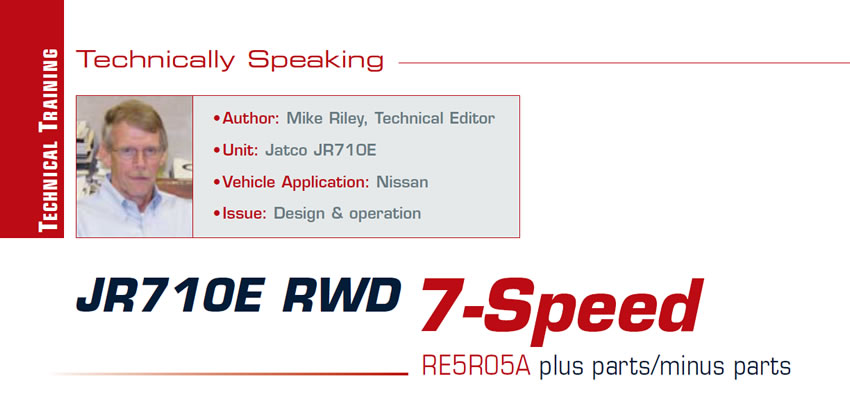
Technically Speaking
- Author: Mike Riley, Technical Editor
- Unit: Jatco JR710E
- Vehicle Applications: Nissan
- Issue: Design & operation
Jatco, a Japanese transmission manufacturer, has for decades produced a variety of transmissions, and although Nissan and Subaru have been the largest consumers, several car companies use its products.
In recent years, the focus of Jatco has leaned toward CVTs (continuously variable transmissions); however, the company has always produced step-type transmissions – from simple three-speed automatics all the way up the food chain to seven-speed transmissions, like the JR710E/711E.
Jatco also launched a hybrid version of the JR710E, coded JR712E, in 2011. The JR712E concept is somewhat in line with the GM 2ML70 hybrid.
The widely used RE4R01A got an extra bump into a five-speed in 1991. As with other manufacturers, Jatco merely added another gear set and clutches to the four-speed to make it the RE5R01A five-gear.
In 2002, Jatco released a completely new-design five-speed called the RE5R05A. In addition to the six clutch packs, three one-way clutches (OWCs) and three planetary gear sets, the RE5R05A was also outfitted with a mechatronic valve body, including seven solenoids. The unit has been used in several vehicle models as well as an inline FWD version called the 5EAT, used by Subaru.
To keep pace with the changing automotive market, Jatco needed to ratchet up the gear offering so it developed the JR710E, which hit the streets in 2009. As with other “extreme”-gear transmissions, the JR710E used, in part, the Lepelletier planet system. That approach enables adding more speeds without adding that much more iron. Much of the RE5R05A design is used for the JR710E.

The first item to illustrate the difference between the five-speed and seven-speed is the pump cover (Figure 1). In addition to a longer shaft on the back side of the cover is the cavity that contains the 2-3-4-6 brake assembly (small piston) and the front brake piston pocket. The pump body and gears are comparable between the RE5R05A and JR710E.
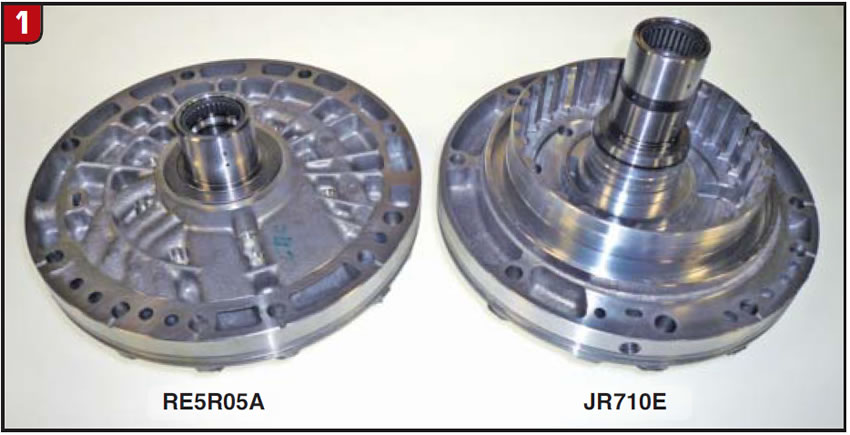
The function of the RE5R05A front planet set consists of the front sun gear being held stationary by the front sprag and/or band. The front planet is driven around the sun gear by the input shaft/ring gear. The two brakes that are incorporated within the JR710E pump cover perform a similar function, but with more components. The small clutch pack (brake) holds a dual front sun gear, whereas the large friction brake holds the “new” additional underdrive planet carrier (Figure 2).
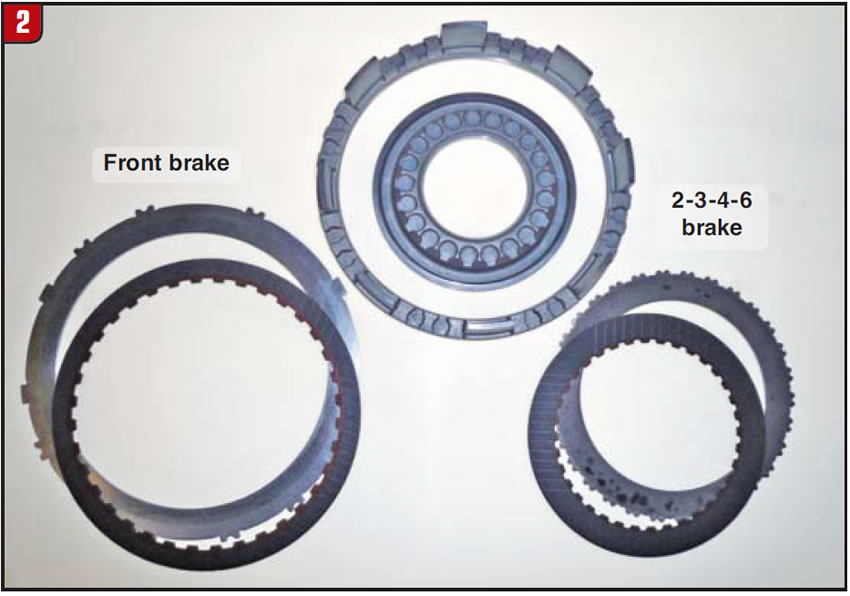
What provides the two extra speeds of the JR710E is the underdrive planet set. It is unique in that the sun gear is two in one. The forward part of the gear meshes with the underdrive planet, whereas the rear part meshes with the front planet.

The underdrive ring gear splines to the front planet (Figure 3).The underdrive planet splines to the shell, which also doubles as the front OWC inner race.
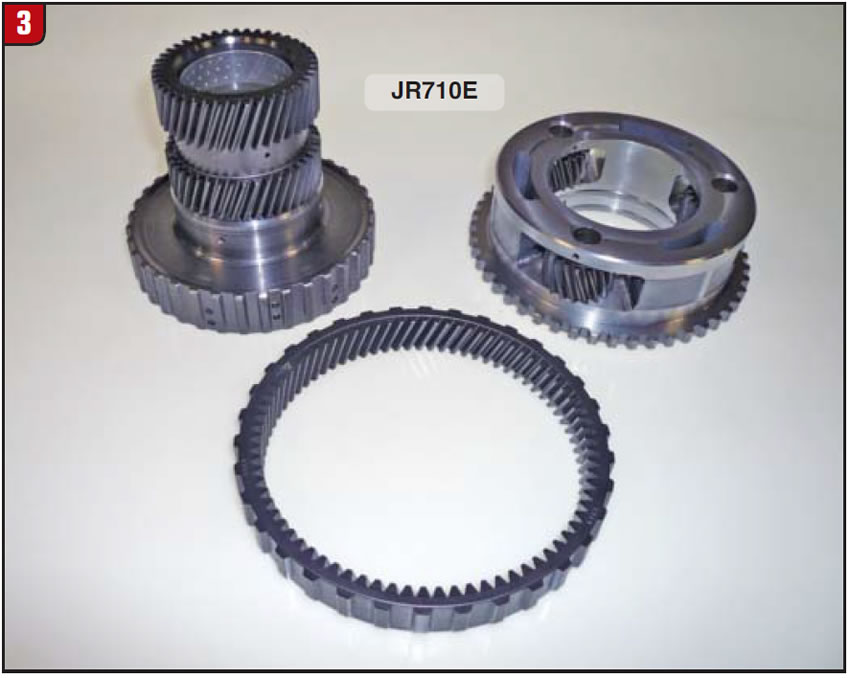
The front planetary of the RE5R05A is driven by the input shaft/ring gear and is connected to the rear ring gear, which drives the rear planet. What makes the JR710E different is that the front side of the planet houses the underdrive ring gear (Figure 4). The underdrive ring gear splines into the pocket. The underdrive and front planetary gear sets work in conjunction to provide certain speeds.
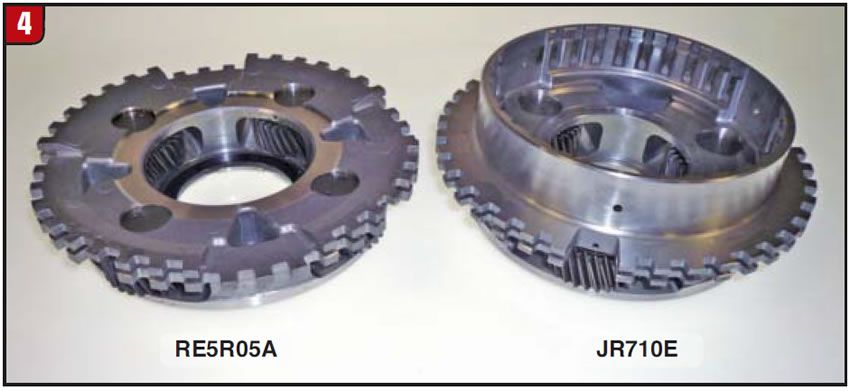
The RE5R05A front sun gear is held stationary by either the front sprag, front band or both. Externally it looks like a clutch drum but is merely a shell for the band to engage. The JR710E counterpart may function, in part, like the five speed; however, the item that it retains is the underdrive planet (Figure 5). The five-speed sun-gear shell houses the front sprag (small OWC), whereas the seven-speed shell has the front roller clutch inner race made as part of it.
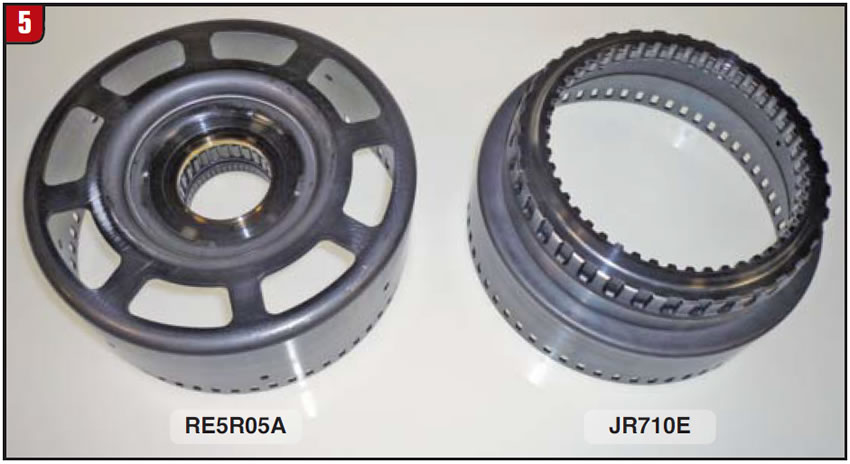
As far as torque capacity goes, the JR710E takes the prize when it comes to the front one-way clutch. Although it’s a roller clutch and not a sprag, it is a sizeable component (Figure 6). The outer cam is anchored to the case, and the inner race is the shell in Figure 5. Guess what – it can’t be installed upside down, which is a great thing. So much for the front end of the transmission and items that were added to provide additional gears. The center part of the JR710E is comparable to that of the RE5R05A.
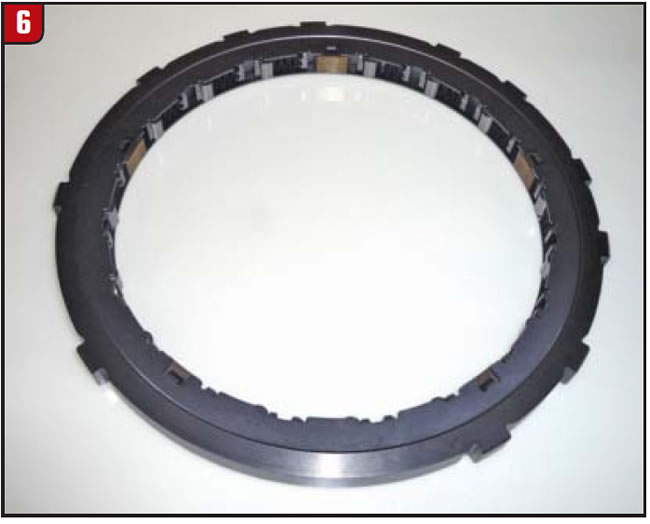
The center and rear planetary sets are carbon copies between the two models. The rear sun gear in both transmissions contain a sprag. With the exception of friction quantities, the high/low reverse and direct clutch assemblies are also comparable.

The reverse clutch is positioned in front of the center support on both the five-speed and seven-speed transmissions and operates the same. It’s the back end of the center support that separates the two models. The RE5R05A uses not only a forward (low) clutch pack but also has an overrun clutch due to having a low sprag (Figure 7).
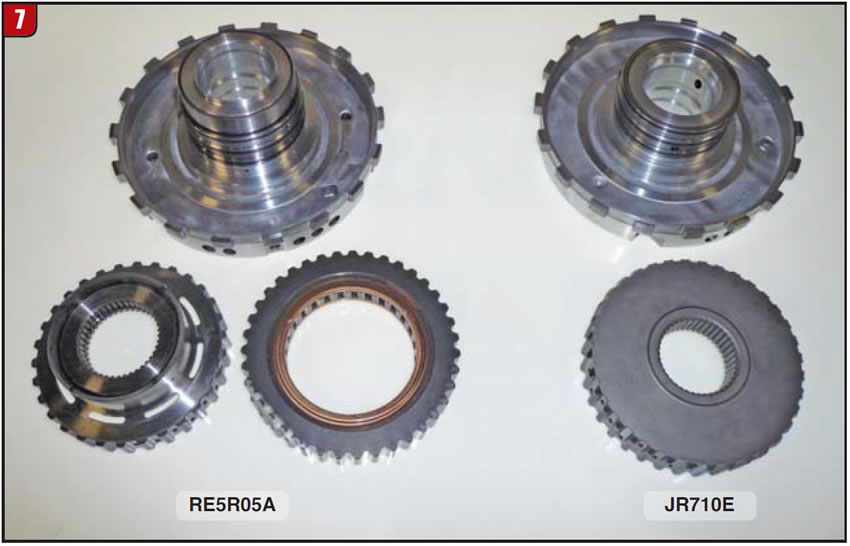
The JR710E has only a low-clutch assembly because there is no one-way clutch requiring an overrun clutch. Improved computer shift strategy enables the JR710E to have acceptable synchronous shifts without a low OWC – just one example of getting more done with less stuff.
The basic layouts of the valve bodies are the same between the RE5R05A and JR710E. They are both mechatronics with a slew of solenoids. One difference is that the five-speed has seven solenoids, whereas the seven-speed has nine (Figure 8). On the JR710E, there are three types of solenoids: five of one type, three of another and a single. The valve body shown in Figure 8 is minus the TCM. If it were there, it would appear as a black plastic blob. The TCM plugs directly into the solenoids (no dangling wires). Also shown in Figure 8 is the internal mode switch and case connector. It’s a rather compact assembly.
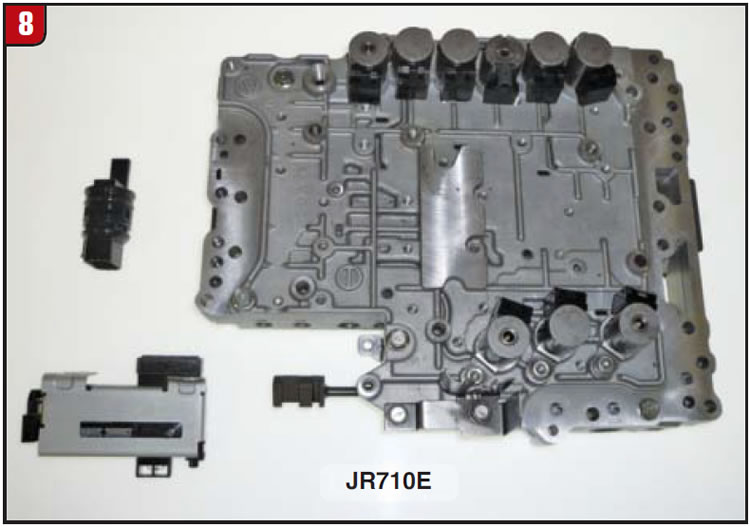
Transmission manufacturers, for some time now, have been squeezing more from every component. Jatco certainly did it on the JR710E by starting with a five-speed and adding and subtracting stuff to gain two more speeds.














